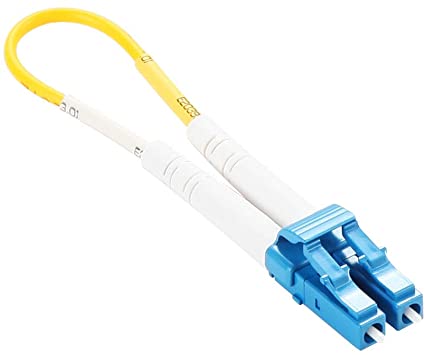Fiber optic cables are one of the most trusted network systems in developed countries like the United Arab Emirates. No matter how careful the installers are and how efficient the system is, issues and problems can occur in any system and at any point. Fiber optic loopback cable is used to test the network issues and resolve them accordingly.
What is Loopback Cable?
A loopback cable is the type of plug to test the physical ports to identify the network issues in the case of fiber optic cables. They are also called loopback adapters and loopback plugs. The fiber optic loop is terminated with connectors at both ends of the cable, which forms the loop. The structure protects the cable as well as provide sufficient support in identifying the network issues. It helps in testing the receiver sensitivity and transmission capability of the network equipment.
This article aims to share a brief guide about fiber optic loopback cable, dig deeper, and learn about all the important details to enjoy better connectivity and network.
Top 4 Details You Should Know About Fiber Optic Loopback
Determining network issues is one of the most important steps of fixing them and ensuring high quality, smooth network provision. Doing so is not easy at all. It requires the use of the right tools and techniques. The fiber optic loopback cable is one of the best supports to identify network issues with complete accuracy. However, you have to be careful about multiple things related to it.
Read also : Top 8 Tips to Make Your Home Security Foolproof
Here are some of the most important details you need to be aware of in the case of fiber optic loopback cables.
1. Application of Fiber Loopback Cable
Fiber optic loopback cables are usually used to check the operations of the fiber optic transceiver. However, the application is not just limited to it. It is also applicable in the following types of fiber optic systems.
- Fiber amplifier
- Optical fiber sensor
- Tester
- Cable TV systems
- Communication systems
2. Common Types of Fiber Optic Loopback
There are two main types of fiber optic loopback cables, which are mentioned below.
- Optical Connector Types of Loopback Cables
- Optic Fiber Mode Type of Loopback Cable
These two types of fiber optic loopback cables are further divided into numerous types.
i. Optical Connector Types of Loopback Cables
Optical connector types of loopback cables are further divided into the following types and categories.
- SC
- LC
- MTRJ
- ST
- FDDI
ii. Optic Fiber Mode Type of Loopback Cable
The optic fiber mode type of loopback cables are further divided into the following categories.
- Single mode 9/125 fiber optic loopbacks
- 10G multimode loopback
- Multimode 50/125 fiber optic loopbacks
- 62.5/125 fiber optic loopbacks
- 10G loopback module
In addition to it, these are also categorized according to different colors. The blue color is assigned to single-mode SC type and LC type fiber optic loopbacks. On the other hand, the multimode SC type and LC type fiber optic loopback cables are available in beige color.
3. Specifications of Fiber Optic Loopback
Specifications of fiber optic loopback cables play an important role in selecting the right one and enjoy better results. Therefore you should never commit the mistake of overlooking the specifications. Fiber optic loopback cables are available in the following working wavelengths.
- 850 nm
- 1310 nm
- 1550 nm
850 nm and 1310 nm wavelengths are suitable for multimode applications. On the other hand, the 1550 nm wavelength is suitable for single-mode applications. In addition to it, it allows insertion loss for up to 0.2 dB. The suitable temperature range with this limit of insertion loss is -40 to +80 degrees centigrade.
4. Steps to Make Fiber Optic Loopback
Fiber optic loopback cables provide substantial support in identifying hardware problems. It tests transmit and receive ports at the same time to diagnose the issue and fix it. However, before doing so, you need to create the loopback cable.
Here are some of the most important steps you need to follow in the process.
Step 1: Collect the pair of Cat5 cables, which are approximately 4 inches long.
Step 2: Create tight twists along the cable to ensure proper signal interference. Be sure to leave half an inch at the end before you start twisting the cable. The twists should be close to each other. You can use some tool for it, in order to save your hands from any injury.
Step 3: once you are done with twisting, line the ends of the cable after folding it. Ensure their proper alignment and prepare for insertion.
Step 4: Insert the cable in the end and twist it.
Step 5: insert plastic tube over the wiring.
Step 6: test the physical loopback.
However, if it is too complicated for you, you can simply hire fiber optic cable Dubai based companies to look after all your installation, connection, and network issues without any hassle.
Could not grab much of the technical details?
Fiber optic cables provide the best quality networks. However, their technical details are too complicated for the understanding of common people. You do not need to worry much as you can always consult the professionals to resolve all your tensions and worries with expert level skills.
Recommended :
